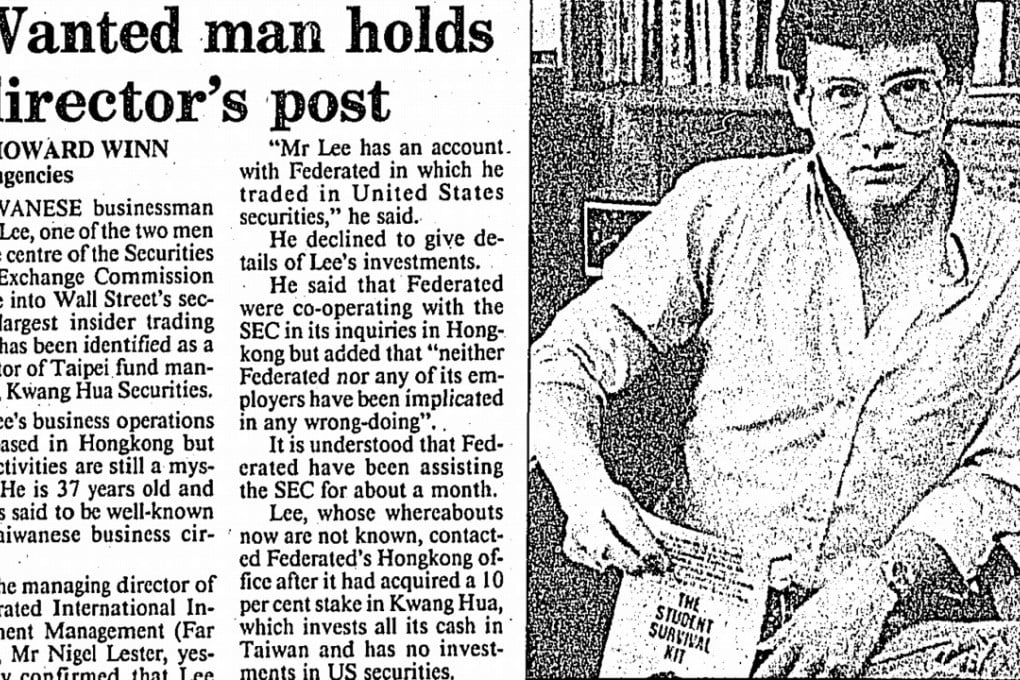How one of Wall Street’s biggest insider trading cases was cracked in 1980s Hong Kong
United States’ case against a flamboyant Taiwanese investor made headlines around the world, and began the end of an era when short prison sentences sometimes made financial crime seem like a good bet

One evening in May 1986, Dennis Levine, a 33-year-old managing director in the mergers and acquisitions department of Wall Street investment bank Drexel Burnham Lambert, drove to the United States Attorney’s office in Lower Manhattan, went up to the sixth-floor reception area, and extended his hand to the two government prosecutors who were waiting to meet him. They weren’t interested. They bent him over a desk, frisked him and arrested him.
Not fully comprehending his situation, Levine seemed particularly worried that his BMW 633CSi would spend the night illegally parked on the street below. Wishing perhaps to be less conspicuous, he had driven it instead of his fire-engine-red Ferrari Testarossa. In a small courtesy that the lesser criminals with whom he was about to spend the night were likely not shown, the prosecutors moved it to the underground car park. The banker then spent the night in a holding cell, without his belt and Hermès tie, but still wearing his Gucci loafers.
Levine’s arrest, chronicled in Pulitzer Prize-winning author James Stewart’s bestselling Den of Thieves (1991), hit the news the next day and began what was then the biggest scandal in Wall Street history. His arrest was followed within weeks by those of two of his friends, Robert Wilkis, a vice-president at EF Hutton who had worked at Lazard Frères, and Ira Sokolow, a vice-president at Shearson Lehman Brothers.
A friend of Wilkis from his time at Lazard, analyst Randall Cecola, was being investigated and would later be arrested. David Brown of Goldman Sachs was arrested next, followed by Ilan Reich, a partner at Wachtell, Lipton, Rosen & Katz, one of Wall Street’s top law firms.
Then, in November, Ivan Boesky, one of the best-known men on Wall Street in the 1980s, accomplished a rare feat by at once pleading guilty, paying US$100 million in fines and penalties, which equalled the annual budget of the US Securities and Exchange Commission (SEC), and still having a small fortune left over. He had authored a bestselling book, Merger Mania, a year earlier that explained how to get rich as an M&A arbitrageur, but left out the part about insider trading. When he was later outed as a stool pigeon, he became even more loathed than he already was.

Three months later, in February 1987, Richard Wigton, the head of arbitrage at Kidder, Peabody, was arrested, frisked and marched out of the securities firm’s office in handcuffs in front of his stunned colleagues, the first time a Wall Street executive had been made to do a “perp walk”. The idea came from the US Attorney for the Southern district of New York, Rudy Giuliani, who later dropped the charges against Wigton. Also arrested that Thursday morning was Goldman Sachs’ Robert Freeman, who would spend the next 2½ years trying to stay out of prison. He would be indicted, unindicted, indicted and – ultimately – unsuccessful.